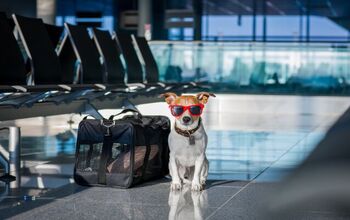Is It Important to Have a Crash-Tested Harness or Carrier?
We all love traveling with our best friends, creating lasting memories together. However, wherever the road takes us, ensuring their safety is a top priority. While some pet parents are comfortable riding around with their pet seated proudly in the passenger seat, this could be a life-threatening decision in an unexpected stop or accident. Is it worth taking the risk? We don’t believe so! In this post, we will explore the different options for safely restraining your pet during your next road trip. More importantly, we’ll examine what makes a crash-tested harness or carrier different from the non-tested options and how they can offer you, as a pet parent, peace of mind. Do Pets Have to Be in a Carrier in the Car? What Are My Options?When discussing how to keep our pets safe in the vehicle, the most common recommendation is to keep them secured in a crate or carrier. In fact, in some states, laws require that pets be restrained to avoid becoming a distraction when driving. A well-ventilated crate will keep your pet contained and prevent them from being thrown about in an accident. But it’s not your only option. If you have a larger dog, you may not have enough space for an appropriately sized crate in your vehicle. Others may have a pet that is uncomfortable or anxious in a crate. In these cases, a pet seatbelt can keep your pet safe. But it’s important to note that not all carriers and harnesses are created equally. There are a few additional considerations, including whether your gear is crash-tested and how they are secured within your vehicle. What is a Crash-Tested Harness or Carrier? You may be wondering what exactly a crash-tested harness or carrier is and what sets it apart from other travel gear. The products we refer to as crash-tested are those that passed the rigorous independent testing carried out by the Center for Pet Safety (CPS). Not only do these products pass the initial testing, but they also continue to be evaluated. Certification can be revoked if a product falls below the standards and requirements set out by CPS. On the CPS website, you can see details about the testing each product undergoes, including video evidence of the test and the date that it was tested. If you are road-tripping with your pet and searching for a CPS-certified harness or carrier, here are a few options that we highly recommend: Sleepypod Clickit Sport Plus Car Seat Belt Harness Sleepypod Air Airline Approved Pet Carrier Diggs Travel Pet Carrier for Small Dogs and Cats Lucky Dog Kennel A complete list of CPS-certified crash-tested products is on the CPS website.












